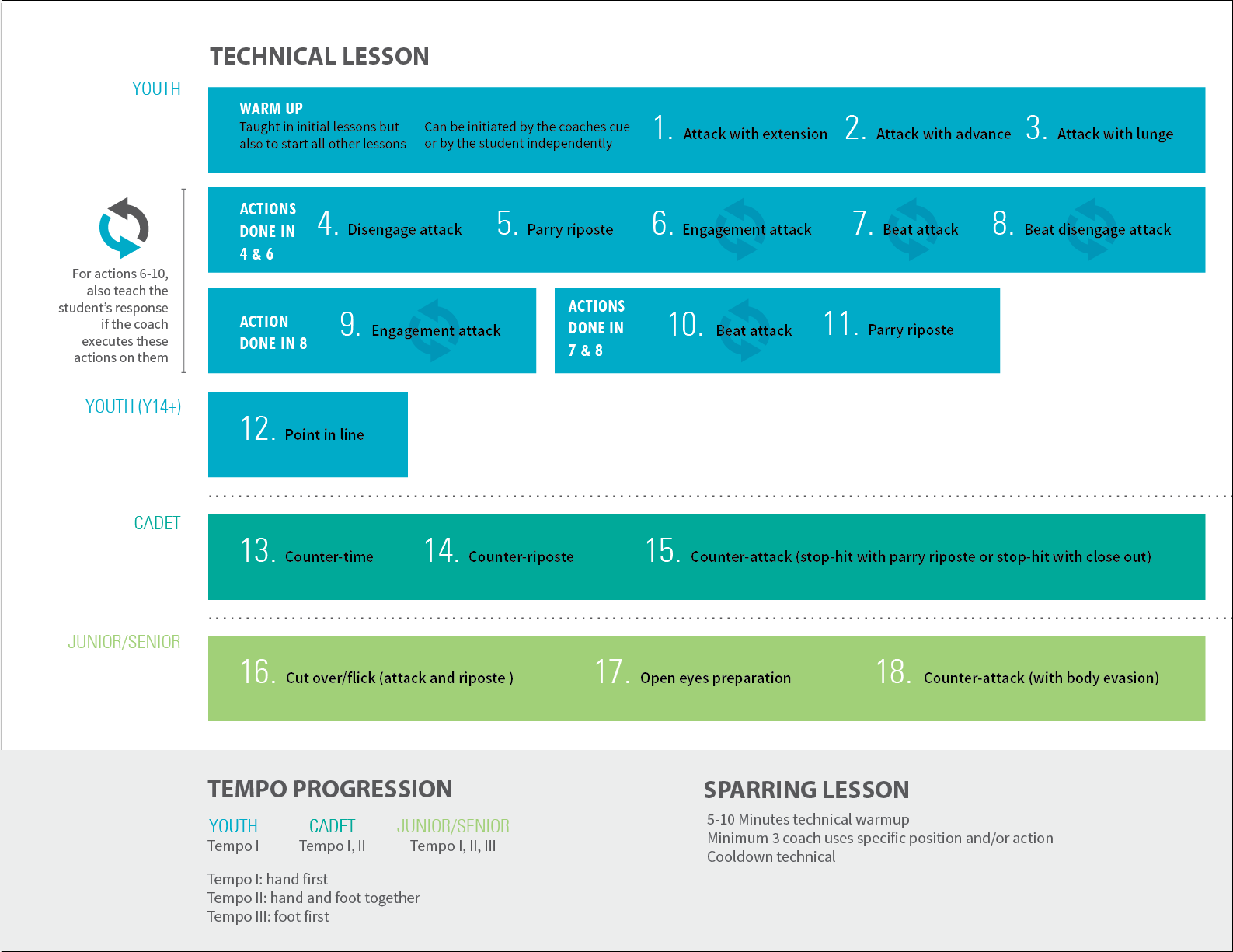I’ve been in Budapest for three months now [editor’s note: this was written a few days before publication]. Examinations are next week and practice sessions have shifted focus to refining the material that we covered. I struggled with the few articles that I wrote covering the foil system here, because I didn’t want to write a book on fencing (yet.) But with a little bit of help, I’ve laid out the building blocks of the system. The chart [above, or downloadable here] shows what actions to teach, in what order, and for what ages. Of course, this is more of a guideline that a rule.
For any given action, a multitude of variations exist. Parry 4 riposte can be executed directly, with disengage, with cutover, with opposition, etc. Actions can be used merely as preparations for other actions, like showing circle 6 to really do parry 4 riposte.
The hard part has been finding combinations of preparations and actions that make sense. For example, showing 8 preparation to take circle parry 8 riposte works great on defense, but showing 8 to circle 8 engagement attack is not the best. Finding the combinations that work for you and for your students is how you use this information to build a system of your own.
Special thanks to Theresa Stoodley for the design of the graph.




